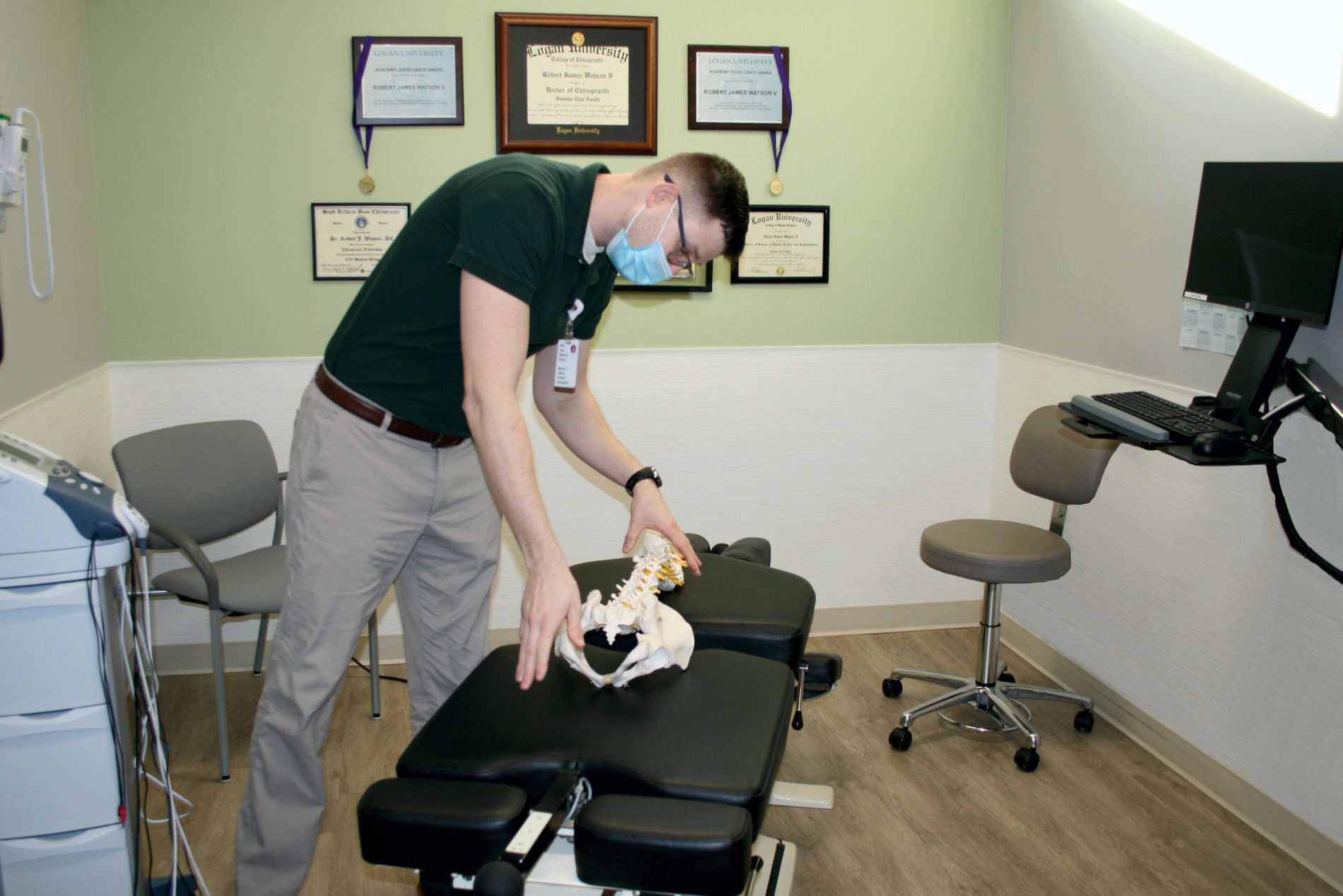
TECHNOLOGY COMBINED WITH CHIROPRACTIC EXPERTISE IS DESIGNED TO HELP RELIEVE BACK, LEG, NECK AND SHOULDER PAIN
SCHERERVILLE– If you suffer from neck, back, leg or arm pain from stenosis, disc herniation, spondylosis or a number of other degenerative spine conditions, a non-surgical alternative option may be beneficial. A safe, gentle evidence-based solution is now available close to home in Northwest Indiana.
Advanced technology, called the Cox® Technic flexion distraction table, is a non-surgical doctor-controlled, chiropractic instrument that enables precise hands-on decompression, adjustment and manipulation of the spine. This therapy has proven to provide relief for pain associated with many chronic back conditions. Practitioner Robert Watson, DC, MS, offers this technology at the Community Neuroscience & Sports Medicine Center in Schererville, a part of Community Healthcare System. The 8th generation table was created by Dr. James Cox in Fort Wayne, tested by Loyola School of Medicine in Chicago and is the only one located in Northwest Indiana.
Research shows that flexion distraction and decompression in many cases helps to relieve acute and chronic back, neck, arm and leg pain from disc herniation, slipped or ruptured disc, sciatica, stenosis, spondylolisthesis, pregnancy-related backache or other conditions and returns patients to an improved quality of life, said Watson.
“Flexion distraction treatment is used by 63 percent of chiropractic physicians,” he said. “Of those physicians, only 3 percent, including myself, are certified and have completed formal training with the Cox Technic. It is the first line of care for back pain relief according to the American Pain Society and American College of Physicians-before drugs, imaging, epidural steroids and back surgery.”
Chiropractors have been around for more than a hundred years and are licensed doctors who are required to pass a series of four national board exams and are regulated by state licensing boards. They are medical professionals who diagnose and treat musculoskeletal and nervous system disorders.
A chiropractor can use many different techniques to relieve pain including applied pressure, massage and hands-on manipulation (adjustment) of the vertebrae and joints. They may also order X-rays, MRI studies and
lab work. Chiropractors don’t prescribe medications, but they do recommend such things as therapeutic and rehabilitative exercises and nutritional and lifestyle counseling to help the body heal itself.
“That is why we use a customized treatment plan for each patient consisting of a three-pronged approach including exercise, nutrition and treatment,” said Watson. “Our goal is to help our patients go from pain to no pain as quickly as possible using the 50 percent rule. Fifty percent of the relief is measured objectively by physical testing and the other 50 percent relief is subjective, according to the patient.”
For more information about sports medicine and therapy services at the hospitals of Community Healthcare System, visit COMHS.org.
